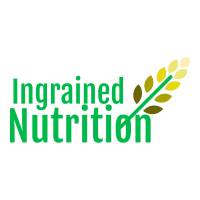Baby led weaning (BLW) or feeding refers to an infant feeding method where infants around 6 months of age feed themselves finger foods, as opposed to being offered purée as a first food. The traditional feeding method is a progression starting with spoon fed purees progressing to a thicker consistency, lumpy foods then solids over a 6-month period (approximately). These two feeding methods can be used in conjunction and there is no reason why one method should be avoided.
Positives of BLW
The biggest positive of BLW is that children can eat family foods from the very beginning of their solid food journey, minimising the additional prep for mums and dads. Another advantage is they also have more opportunities to explore new tastes and textures of foods earlier than they would with spoon feeding which can help kids to build confidence earlier and increase the likelihood of new food acceptance.
Potential Barriers to BLW
Issues that may arise around BLW are usually surrounding not knowing how much the child has eaten as well as the mess at mealtimes as it is much messier than spoon feeding. However, mess is an important part of food exposure and learning to be competent eaters. Infants and children have great intuition regarding their hunger levels and are good at eating enough for their growing bodies. Parents can also struggle with introducing a range of foods that are suitable and will not cause a choking risk so it can be best to seek the advice of a professional when starting out.
Starting off
When beginning with solids, it’s a good idea to start with only one or two foods. That way you can monitor your baby for any adverse reactions. Remember that we no longer recommend withholding potential allergens, rather to introduce them early and regularly (ie/ don’t offer egg once and then not again for a few weeks). Once your baby has tried a new food, you can start to add more new foods. The speed of introduction will very much depend on your baby’s progress.
What first foods Should I give
Generally starting with foods that are a good source of iron is the recommendation due to your baby’s iron stores needing a top up after about 6 months. An example of the best starting foods is a lamb cutlet/chop using the bone as a handle. Trim most of the meat off for your own dinner and check that the bone has no spiky edges. Babies love to gnaw on the remaining meaty parts and experience the delicious flavours. The long bone gives them something to hang onto. Other examples of first foods might be steamed vegetable sticks that are soft enough for your baby to mash with their gums. Otherwise, offer your child single foods that the rest of the family are eating. It’s best to choose single foods at first, rather than foods containing a mix of ingredients, so you can monitor your baby’s tolerance and any reaction.
Key to success
- Practice with veggies before moving onto sweeter fruits (to help optimise acceptance).
- Longer ‘sticks’ or ‘strips’ of food help kids to hold and munch on the food. This is often easier than small, cut up pieces.
- You can combine BLW with spoon fed purees. This can be a great way to ensure your bub is getting enough to eat if this is a concern. Remember to respond to their cues- if they indicate ‘no’ then do not force feed.
- Mess is important for learning and development! Use a splat mat under the highchair and try not to let the mess cause stress at mealtimes.
- Go by what your baby’s developmental cues tell you, rather than their age.
Every child is different, and you need to choose a method that suits your child. Some children will take a while to develop the confidence to self-feed and will progress slowly with new foods, while others will speed through the introduction stages.
By Caitlin Mannion, Dietitian




